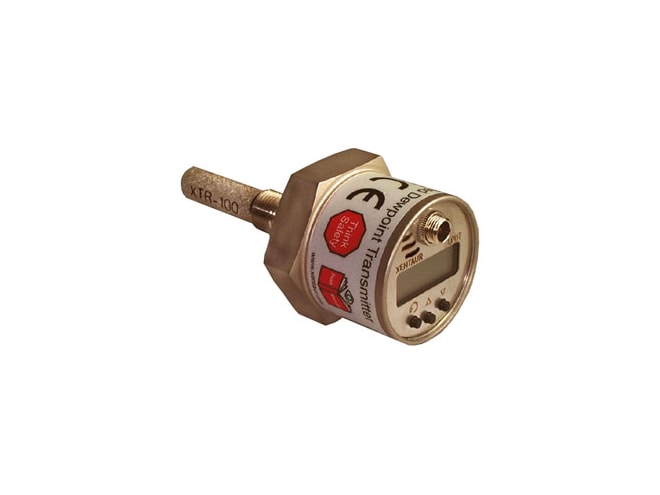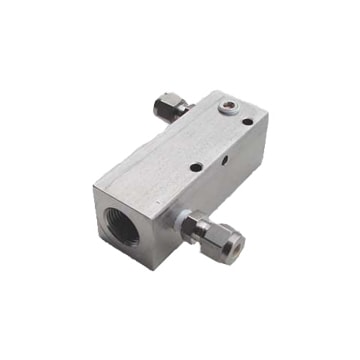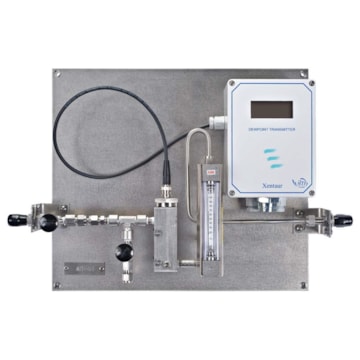COSA Xentaur LPDT Dew Point Transmitter
Loop powered (2-wire) dew point transmitter with display.

Overview
Features
- -148, or -85, to 68°F dewpoint
- ±5.5°F accuracy
- ±0.9°F repeatability
- 4-20mA analog output
- 10 to 33VDC power requirements
What's in the Box
- 6-ft cable
- Calibration certificate
Description
The COSA Xentaur LPDT Dew Point Transmitter is the world's smallest loop powered (2- wire) dew point transmitter with a display. The compact COSA Xentaur LPDT dew point transmitter is a fully functional instrument operated through a miniature custom LCD display and three push buttons, using the same user friendly interface of all COSA Xentaur hygrometers. The analog output is linear to the engineering units selected for display and is user-configurable.
Xentaur HTF™ Moisture Sensor Technology
The COSA Xentaur LPDT dew point transmitter uses a Xentaur HTF™ Aluminum Oxide sensor. The breakthrough HTF™ sensor technology represents advances in thin film and metal oxide sciences and offers significant performance advantages over all other aluminum oxide sensors. The operating principle of the HTF™ aluminum oxide sensors is that a hygroscopic layer of aluminum oxide adsorbs or releases water molecules within its pores, depending on the water vapor pressure in its environment. The electrical capacitance of the aluminum oxide layer changes with the surrounding water vapor pressure. The electrical capacitance is measured between the aluminum core of the sensor and a porous conductive gold layer on the outside.
The advantages of the HTF sensor technology are a result of the proprietary manufacturing method in which the aluminum oxide layer is made to be hyper thin as well as extremely hygroscopic. This results in a very sensitive sensor with fast response.
High Capacitance Response
HTF sensors have a capacitance change, several orders of magnitude larger than that of conventional aluminum oxide sensors due to the hyper thin film, a sharp transition layer, and a special pore geometry. Additionally, this change is quasi-linear, and its sensitivity to temperature is negligible. The advantages of a linear high capacitance response are better sensitivity, better repeatability, and faster response times. Also, the measurement system is less prone to noise and drift, and signal conditioning is kept to a minimum.
Documents
Accessories
Applications
This product can be used in the following applications:
Need Help? Call a Calibration engineer at 1-800-884-4967
We're open Mo-Th 8am to 5:30pm. Fr 8am to 5pm ET























